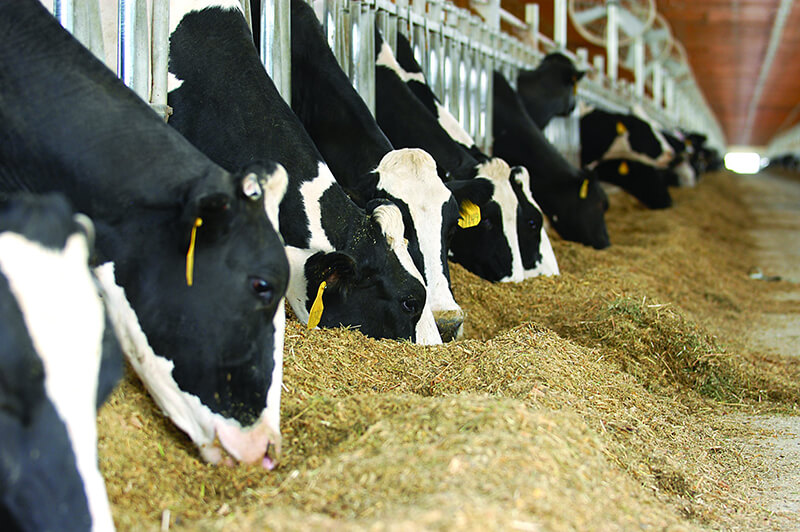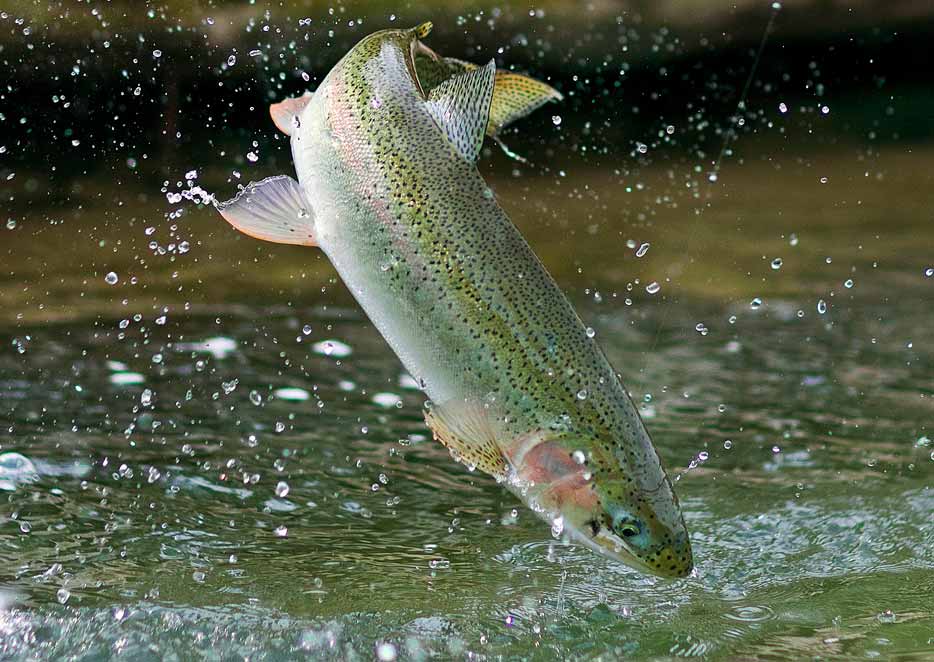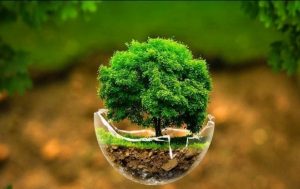Nowadays, due to the increasing population growth and the threat of food security, it is necessary to review and revise the feeding programs of livestock and poultry. One of the important and basic issues in raising livestock, poultry and aquatic animals is the supply of food and proper ration. The use of animal protein sources in poultry feed has faced many restrictions in recent years due to the possibility of microbial contamination and the creation of unpleasant odor and taste in poultry products.
This has caused a search to find new protein sources that can replace conventional ingredients in feed such as corn, soy, and fish meal. The use of these new sources has been able to improve growth performance, increase feed efficiency, provide protein needs, and on the other hand, provide economic efficiency for poultry farmers.

Microalgae are one of the new protein sources that have attracted the attention of nutrition specialists in recent years. Microalgae are prokaryotic or eukaryotic photosynthetic microorganisms with the ability to grow rapidly, which are among the oldest organisms on earth and their size does not exceed a few microns. Microalgae are the main producers of the food chain, nitrogen fixers and create ecosystem and
Suitable habitats for aquatic life play a vital role, from the economic aspect, these organisms are valuable and have many uses in industrial and non-industrial dimensions due to their colloidal substances. Today, the use of microalgae as a source of food, medicine, cosmetics and health industries and the production of diesel fuel and jet fuel is expanding rapidly. Antimicrobial, antibacterial, antifungal, antialgae and antiprotozoal properties of many extracellular products or extracts from microalgae have also been observed. In recent years, the idea of providing food needed by societies through alternative sources has once again attracted the attention of scientific societies. It is directed towards algae. Green, brown and red types can be mentioned among the most important examples of algae. All algae contain chlorophyll pigments, effective pigments in photosynthesis.
The dominant pigments in green algae are chlorophyll, beta-carotene and various xanthophylls, which cause the dark color of these algae, these algae store their energy in the form of starch or fat. Green algae need enough light to survive, so they are usually found in surface water, spirulina is the best type of green algae that plays a major role in providing food for other organisms.
they do. Brown algae get their brown color from xanthophyll and fucoxanthin pigments, brown algae store their energy in the form of carbohydrate compounds, sugar and alcohol. The main pigments of red algae are phycoerythrin and phycocyanin, phycocyanin is one of the most effective derivatives of spirulina algae, and starch is the main form of energy storage in red algae.
Microalgae are considered as a strong biological source, spirulina microalgae culture can produce 121 times more protein than corn culture and can adapt to different growth conditions. Spirulina is cultivated all over the world and is mainly used as a food supplement. Spirulina plays a role in maintaining health and strengthening the immune system in humans.

Spirulina is a single-cell microorganism with a spherical nucleus, spirulina has a spiral-shaped nucleus and is multicellular, the spirulina cell is much larger than the other cells in other microalgae. In addition to providing all the nutrients needed by the body, spirulina
Yes, it strengthens the body’s immune system and detoxifies it completely. Spirulina mainly grows in highly alkaline waters where many organisms cannot grow.
Spirulina has been used as animal, poultry and aquatic feed for a long time, and it is also used as human food due to its richness. Spirulina is a good source of proteins (60 to 70%), vitamins (including vitamin B12), essential amino acids, dry matter lysine, minerals, essential fatty acids (including gamma linolenic acid) and strong antioxidant compounds. Holman et al. 2102) In terms of nutritional value, spirulina has the highest level of protein compared to other algae and has antioxidant properties due to having a high level of pigments.
The results of using spirulina as animal and poultry feed

Researches have shown that if spirulina is used in animal and poultry feed, the need to use mineral-vitamin premixes is greatly reduced, in addition, chickens that have received diets supplemented with spirulina are healthier, which can It is caused by improving the performance of the immune system. The recommended levels of spirulina in poultry diets are 5 to 10 percent. Using higher levels may reduce growth performance. In laying hens, it has been observed that the addition of spirulina in the diet reduces the total cholesterol content of eggs and increases the level of omega-3 fatty acids.
Spirulina as an aquatic feed
Since marine-sourced cultured food accounts for about half of the total global demand for human nutrition, there is a need for the aquaculture industry to continue to grow more powerful than ever, which makes the fish feed market grow as well. be developing Currently, some ingredients of aquatic feed are prepared from cheap fish (in the form of fish meal) and plants. Fishmeal production cannot be increased due to increasing pressure on the stability of aquatic ecosystems. Therefore, the production of alternative sources compatible with the environment for the ingredients of aquatic feed should be developed. Microalgae biomass shows the potential to be used as an alternative food source, because the cellular metabolites of these microorganisms contain a combination of essential amino acids, unsaturated fatty acids, vitamins and pigments. In addition to these unique properties and bioactive compounds that are a main component in aquatic nutrition, microalgae can increase the survival of cultured species, improve the color and quality of fillets. Algae, especially spirulina algae, have the best and highest biomass productivity among photosynthesizers, including fodder crops, and therefore have high commercial potential. Also, the production of microalgae does not require arable land and special water sources, therefore microalgae-based feed contributes greatly to the sustainability of the environment.
In the following, we will have an overview of the studies conducted regarding the potential and use of spirulina in feeding aquatic animals to increase the productivity of aquaculture products for those interested.
According to studies, the global demand for spirulina algae has reached 3.4 billion dollars by 2020, and this amount is expected to grow by 3.4% in the next seven years. The industrial use of algae is mainly based on food products and species related to cosmetics, but studies and researches indicate the fact that spirulina is used as an aquatic feed in fish breeding ponds. Recently, studies have been conducted on microalgae as a potential source of food for fingerlings and adult fish, which show promising results.
The net yield of spirulina biomass is higher than any terrestrial organism. Unlike terrestrial plants, algae do not need fertile land to grow, and also, microalgae do not rely on specific water resources and can be grown in seawater and even freshwater. Therefore, the existing models for the cultivation of microalgae do not require any provision of agricultural land and drinking water. Also, microalgae require less nutrients for growth than insects and bacteria.
Meanwhile, microalgae can be used as a biorefiner during cultivation. Microalgae can grow effectively in various effluents, including the effluent of aquaculture ponds. Unlike yeasts and bacteria, microalgae are a rich source
They are made of fat and protein. These beneficial microorganisms have a balanced amino acid composition, which eliminates the need to use high-cost amino acid supplements in the diet.

The effect of spirulina on the growth and weight gain of farmed aquatic animals
According to the studies, when the aquatic animals were fed with a diet containing a low to moderate amount (2-10%) of microalgae, their weight gain was similar or even better than the control species. In one study, by adding 2% of spirulina microalgae oil to the diet of Salmo salar fish, they saw an 11% increase in their weight compared to control fish. Also, in another study, adding only 0.75% of spirulina algae extract to shrimp feed increased Their weight was 11% compared to the control samples. Compared to all farmed species, tilapia fish has had the most and best results in the use of microalgae diet, studies showed that 49, 58, 69 percent weight gain in tilapia with the addition of diet compared to control samples. have given.
Other research indicates that the use of different percentages of spirulina microalgae in the diet of common carp has been more effective than other fish and has increased their weight by 12-21% compared to the control samples.
Studies on carp showed that by adding different levels of spirulina microalgae to the diet, growth increases compared to control samples. It should be noted that the presence of microalgae in the diet of aquatic animals will not always be positive. A high concentration of microalgae in fish feed (generally more than 12%) can reduce the growth rate and weight of fish, studies have shown that the inclusion of more than 11% of microalgae biomass in combination with fish meal reduces the growth rate. becomes Similar research showed that the addition of green microalgae composition, especially spirulina and cyanobacteria in the amount of 15-20% instead of fish meal in the diet of rainbow salmon, reduces growth. Another study also confirmed that although adding 5% of spirulina to the diet of rainbow trout improves growth, adding more amounts of this microalgae to the diet has the opposite result.
Effect of spirulina based diet on aquatic health

So far, several studies have shown that the lifespan of aquatic animals can be improved with a diet containing microalgae. Research showed that the use of microalgae such as spirulina in the right amount has increased their survival and longevity. Increasing the survival of aquatic animals with feeds based on microalgae can be related to their functional characteristics, including the effects of probiotics, prebiotics, immune stimulants, antiviral, antibacterial, etc. Probiotics are different types of bacteria that produce vitamins and Antibiotics play a role in improving intestinal health. Studies have shown that microalgae have probiotic effects on aquatic animals. When fish consume microalgal cells, the microbiome in the gut digests the algal cell and releases probiotic substances that can inhibit pathogens.
Regarding the effect of microalgae on the quality of farmed fish, it should be said that the firmness of the fillet is an important feature for consumers when buying farmed fish, and soft and loose fillets are considered worthless by the food industry. The creation of cracks and cuts on the fillet occurs when the connective tissue between the muscle layers is torn and the fillet takes on a soft and unpleasant state. Studies have shown that the use of microalgae reduces fillet cracks, for example, in a research with the addition of 2% microalgae to the diet of Salmo salar fish, it was observed that the fillet cracks in these fish were significantly reduced compared to the control sample. . A similar study showed that the addition of only 2% of spirulina microalgae to Oreochromis niloticus fish feed increased the firmness, muscle and fibrous quality of their fillets.
The results of using spirulina algae in aquatics
Traditional aquaculture feeds include fish meal and soybean meal as common, unstable and expensive ingredients. While the aquatic feed prepared from algae has a great potential to replace fish meal and soybean meal. The preparation of this feed has unique features such as the speed and ability of high growth and not depending on arable land and fresh water for cultivation. Apart from the fact that microalgae are a source of protein, lipids and carbohydrates, they also contain a number of biologically active and functional compounds such as prebiotics, probiotics and factors that create resistance to diseases.
Microalgae can be used in aquaculture in different ways, such as algae paste, pellets, and the cultivation of both aquatic and microalgae. Choosing suitable microalgae strains with optimal cell composition can bring lower production costs. It is hoped that with future applied studies, a permanent and sustainable solution will be found to solve the obstacles of using these valuable microorganisms for aquatic feed in order to meet the market demand for aquatic feed.
Those interested in the production and cultivation of spirulina algae can contact the specialized team of Raiya Algab Pars.










